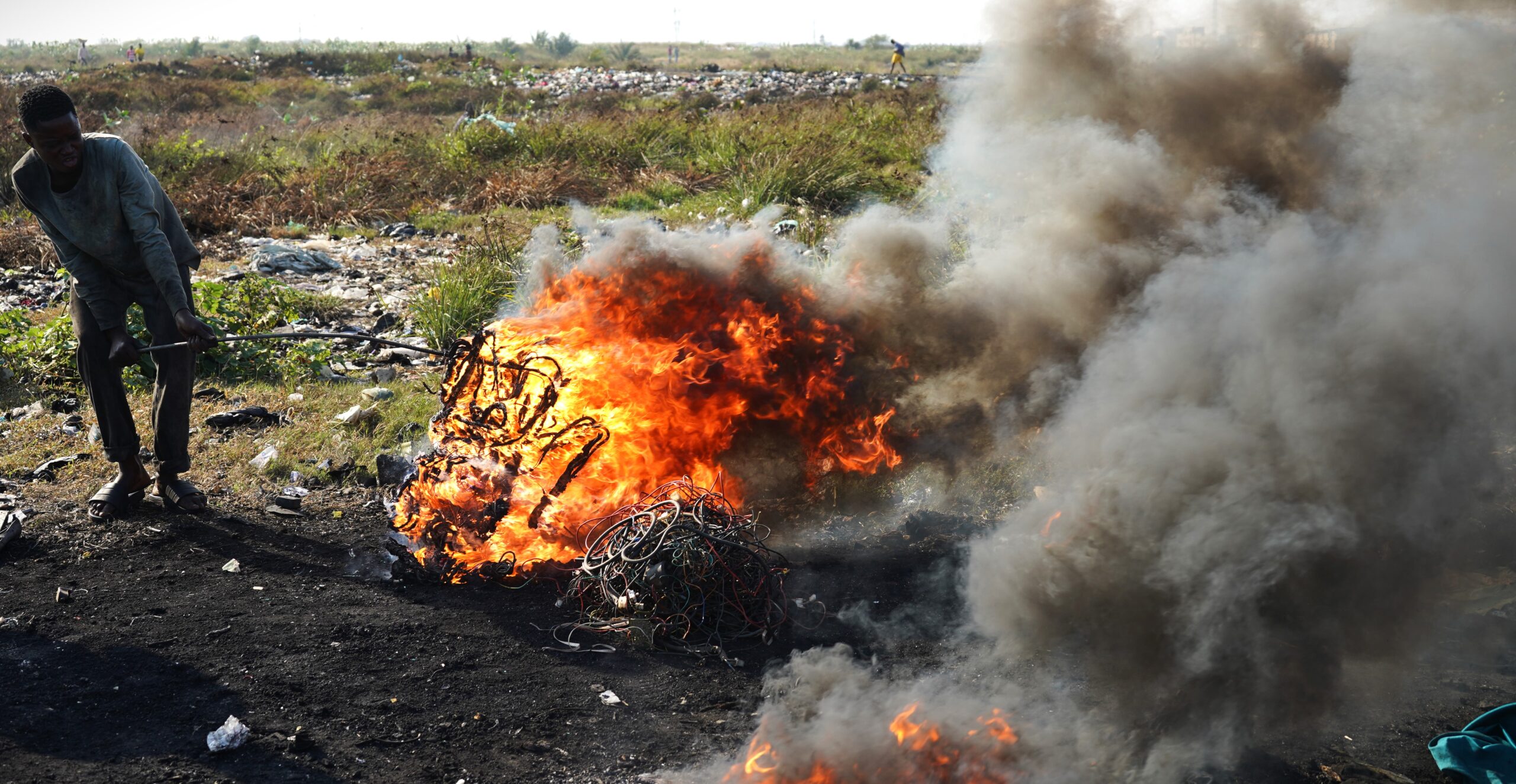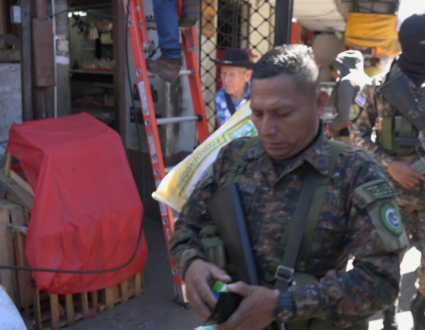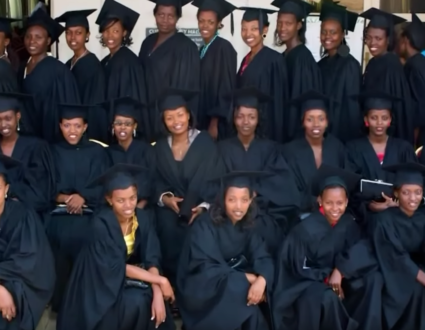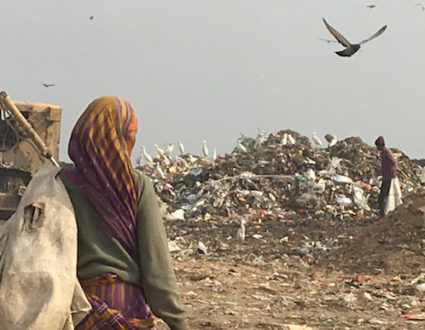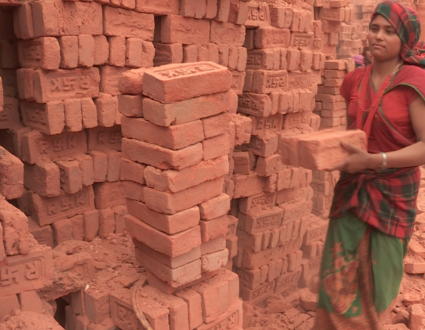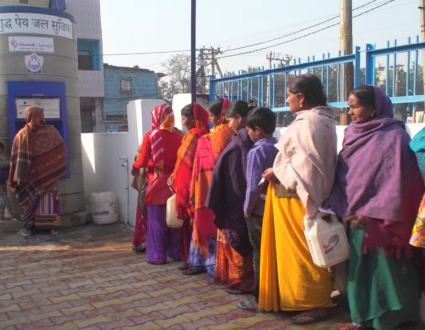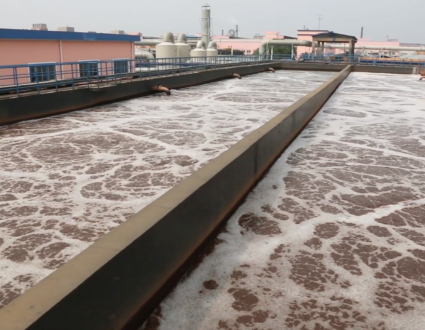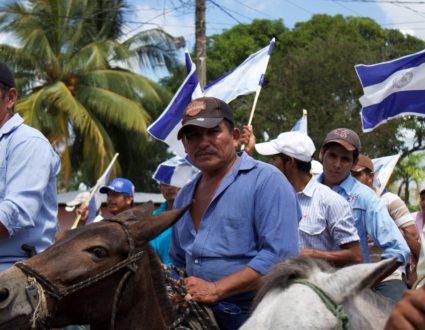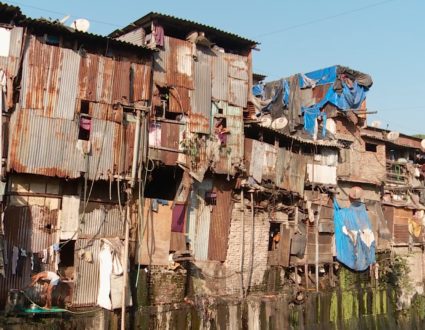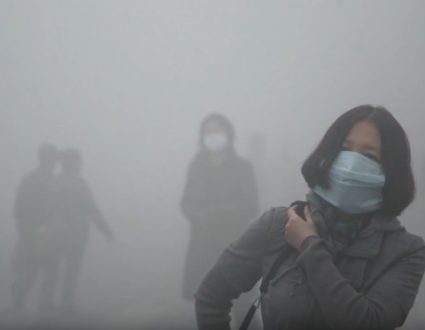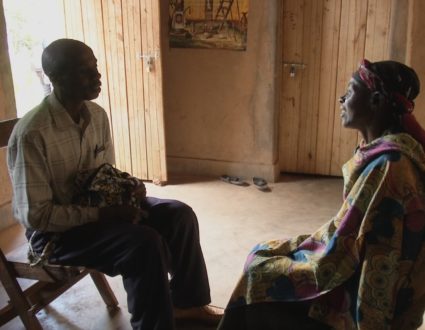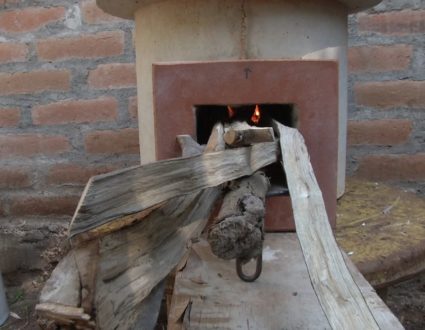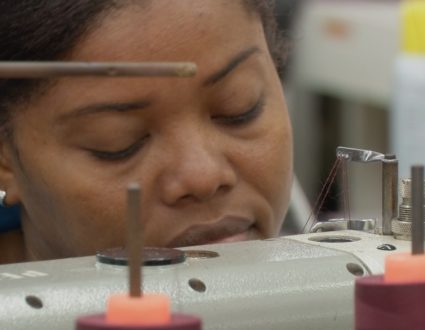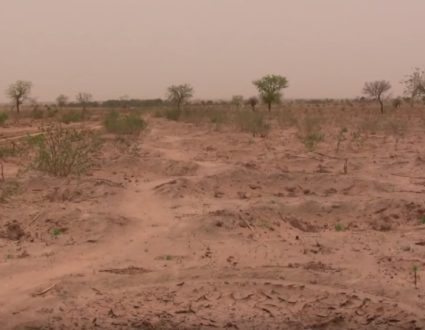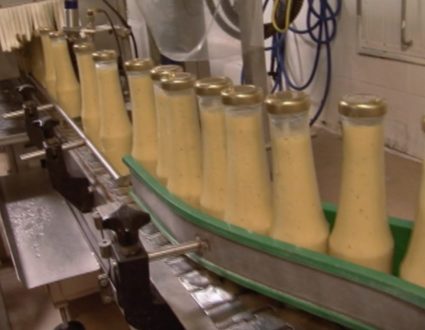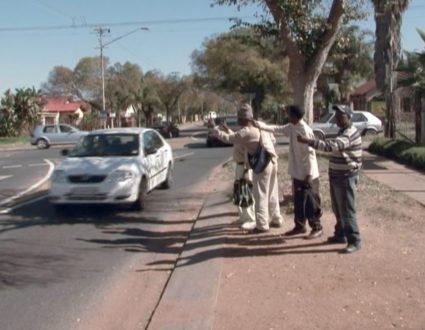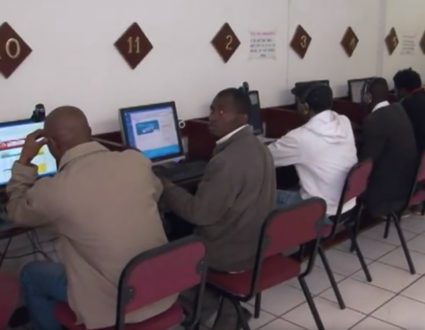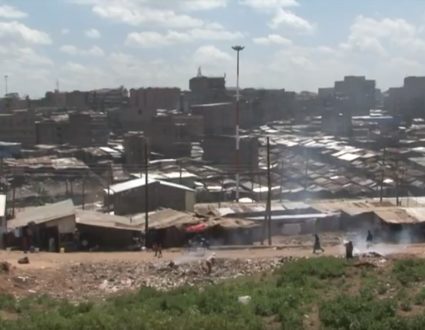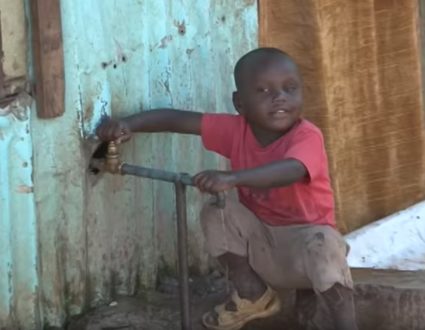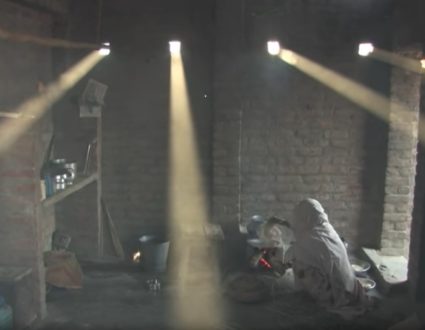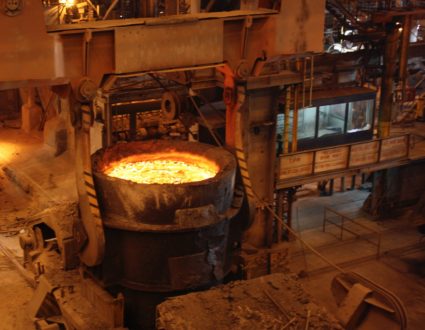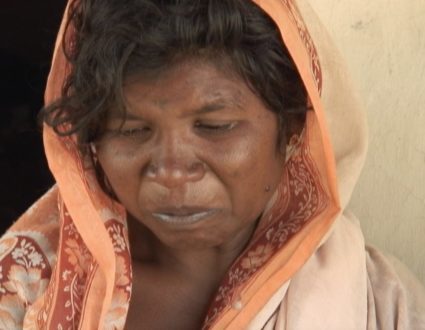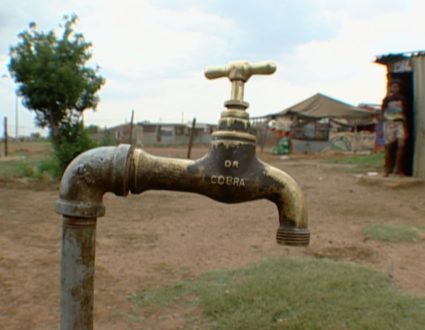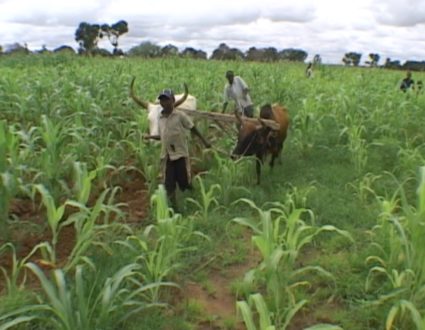GWEN IFILL: But, first: a report about the scourge of child labor in the back-breaking brick manufacturing process in Nepal.
That’s from special correspondent Fred de Sam Lazaro, and it’s part of his series, Agents for Change, a collaboration with The Christian Science Monitor.
FRED DE SAM LAZARO: Heavy lifting is a way of life in this Himalayan country, but workers in Nepal’s brick kilns are in a league of their own.
Here, work is an endless cycle of loads that weigh more than the laborers who carry them, of polluted, oppressive conditions, grinding coal to stoke kilns that must be kept alive at some 2,000 degrees Fahrenheit round the clock, of molding clay into raw bricks that feed the ovens.
TILOOK MOKTAN, Nepal (through interpreter): You don’t use your brains to do this work. It’s just physical labor, but we have no choice. We have debts to pay.
FRED DE SAM LAZARO: Tilook Moktan and his wife, Rina, say life is a never-ending cycle of debt for medical bills, for just running the household, they say, and to put their children in school.
TILOOK MOKTAN (through interpreter): I want to see that my children are educated, that they complete their higher education. Work is too tough in the brick sector.
MICHAEL HOLTZ, Christian Science Monitor: They will get up at midnight, before it gets too hot, work until dawn, sleep for a few hours, get up, start molding more bricks, and do it again the next night.
ANN HERMES, Christian Science Monitor: It’s physically demanding at all aspects. And that’s why I think its startling to see children.
FRED DE SAM LAZARO: We partnered with Christian Science Monitor reporter Michael Holtz and photographer Ann Hermes, who took these still photographs, on a story we found especially relevant now in this earthquake-ravage country about an industry notorious for trapping children and families in poverty.
MICHAEL HOLTZ: I think we really wanted to get a sense of, now that reconstruction is finally getting under way in Nepal, and demands for bricks is going to go so high, what — how that would affect the brick kiln industry itself, in terms of, would there be increases in child labor, increases in bonded labor?
FRED DE SAM LAZARO: There are some 1,100 brick kilns across Nepal, a number that’s grown recently, anticipating large-scale rebuilding from the earthquake.
HOMRAJ ACHARYA, Better Brick Nepal: So these are the areas where they make bricks.
FRED DE SAM LAZARO: All told, they employ about 250,000 people, says Homraj Acharya, who is part of a two-year-old initiative called Better Brick Nepal, or BBN.
And how many children again did you say are working in kilns today in Nepal?
HOMRAJ ACHARYA: We can find around 60,000.
FRED DE SAM LAZARO: Sixty thousand?
HOMRAJ ACHARYA: Children, yes, because, you know, it’s a family-based industry.
FRED DE SAM LAZARO: They live in brick shacks, surrounded by LEGO-like fortresses, molded bricks stacked up at the start of an almost preindustrial process.
For brick makers, there are no set working hours. The basic rule is, you work until you’re too tired to continue, and there’s every incentive to continue to the point of exhaustion, because workers are paid by the brick. They get a little less than one U.S. cent for every one of these that they produce.
HOMRAJ ACHARYA: Because it’s paid on a piece basis, so if children are making like hundred bricks more, so that means you might get a hundred.
FRED DE SAM LAZARO: So, they help the productivity, which helps their wages?
HOMRAJ ACHARYA: Yes, exactly.
FRED DE SAM LAZARO: Do the children help mold bricks, I asked the Moktan? Seven-year-old Ritesh, no, but 12-year-old Ritika, yes.
TILOOK MOKTAN (through interpreter): She works a few hours a week. She helps with the cooking. And, sometimes, when their mother needs to do the cooking, she helps out with the bricks.
FRED DE SAM LAZARO: It may seem normal for children to pitch in with chores. But Acharya says these desperately poor families invariably grow to depend excessively on the children to scrape together more income.
HOMRAJ ACHARYA: The system creates that enabling environment for children to be used.
FRED DE SAM LAZARO: The Better Brick program wants to create a different environment, using incentives for kiln owners.
Those who sign on agree to pay for preschool facilities like this one to get children into a classroom and away from the brick workplace of their parents. And BBN works with owners and parents to ensure that older children attend school.
For owners, these steps could be good business.
HOMRAJ ACHARYA: Giving them incentive in terms of access to loans, and there is helping them to improve their quality of bricks, and then, when there is a bidding process, we are talking to the government.
FRED DE SAM LAZARO: So you would want the government to procure bricks, when it buys bricks, from operators who are certified as not employing children and improving conditions?
HOMRAJ ACHARYA: Absolutely. Yes, that is one of the — the major point of this program.
FRED DE SAM LAZARO: This is one of 23 kilns that have so far signed on to the program. Co-owner Shiva Regmi said he’s happy to improve conditions for workers, and he can certainly use the technical help.
SHIVA REGMI, Kiln Owner (through interpreter): For every one brick that we make, two are broken.
FRED DE SAM LAZARO: Regmi is a newcomer to this business — this kiln is just a few months old — and he may be more receptive to the Better Brick program than others.
At another facility, the owner complained to Acharya that his industry is being unfairly singled out by advocates.
MAN (through interpreter): We are giving opportunities to 400,000 people who work in our industry, and we don’t ask their children to work. People are spreading rumors that we are hiring children, but that’s not true.
FRED DE SAM LAZARO: Many owners can technically make that claim, Acharya says, because their contracts are with adults. It’s parents who press their children into service.
Then there’s the murkier world of subcontractors who provide laborers, many of them children who are not with their families brought here under various arrangements by labor agents or traffickers. It was quite common to see young boys loading and herding the steady train of work animals that carry raw bricks to the kilns.
It was more difficult to talk to them. In a strange twist, children here, like many other places, are told not to talk to strangers. I did manage one fleeting conversation with this young man.
“I had to leave school because my mom and dad weren’t earning,” he said, “so I went to work.”
“How did you get this job?” I asked.
“A rich man from our village brought me here,” he said.
How many others accompanied him?
“Oh, there are many,” he said. “All these guys are from my village.”
“Do you get any time to play?” I asked.
“I do not play,” he said.
And no more time for a stranger. His is just one anonymous story of thousands in an underground labyrinth that preys on poverty and illiteracy, one Nepal’s government admits it has few resources to police.
But Homraj Acharya sees a tiny silver lining. Reconstruction will soon get into high gear with a windfall of foreign aid. And, here, he sees leverage.
HOMRAJ ACHARYA: Four billion has already been pledged by different countries. And we want to make sure that all of those countries who are giving money to Nepalese government do — we want them to use the bricks that are produced child-labor-free.
FRED DE SAM LAZARO: He says Nepal’s builders association has agreed to buy bricks from kilns his program has certified as free of child labor, where they’re available.
And it seems more likely the Moktan family’s bricks will be free of child labor, especially after our interview, when I asked sixth-grader Ritika what her favorite subject was.
GIRL: English.
FRED DE SAM LAZARO: When you grow up, what kind of work would you like to do?
GIRL: I would like to be a doctor.
FRED DE SAM LAZARO: Doctor. Why?
GIRL: Because I want to help the poor people.
FRED DE SAM LAZARO: Two short, hesitant sentences, but to her parents, she’d moved a mountain, and she’d moved them to tears.
TILOOK MOKTAN (through interpreter): I’m really proud that she was able to speak to you in English.
WOMAN (through interpreter): They are tears of happiness.
TILOOK MOKTAN (through interpreter): We will work as hard as we possibly can to see that she completes her education.
FRED DE SAM LAZARO: For the “PBS NewsHour,” this is Fred de Sam Lazaro in Nepal’s Kathmandu Valley.
GWEN IFILL: Fred’s report was supported by the Pulitzer Center on Crisis Reporting and it’s a partnership with the Under-Told Stories Project at the University of St. Thomas in Minnesota.
Reforming an Industry
Heavy lifting is a way of life in Nepal. But the 250,000 workers — many of them children — manning the Himalayan country’s brick kilns suffer on a different level, toiling in terrible conditions and earning less than one cent per brick. In collaboration with the Christian Science Monitor, special correspondent Fred de Sam Lazaro reports on efforts to reform Nepal’s critical brick making industry.
Related Links
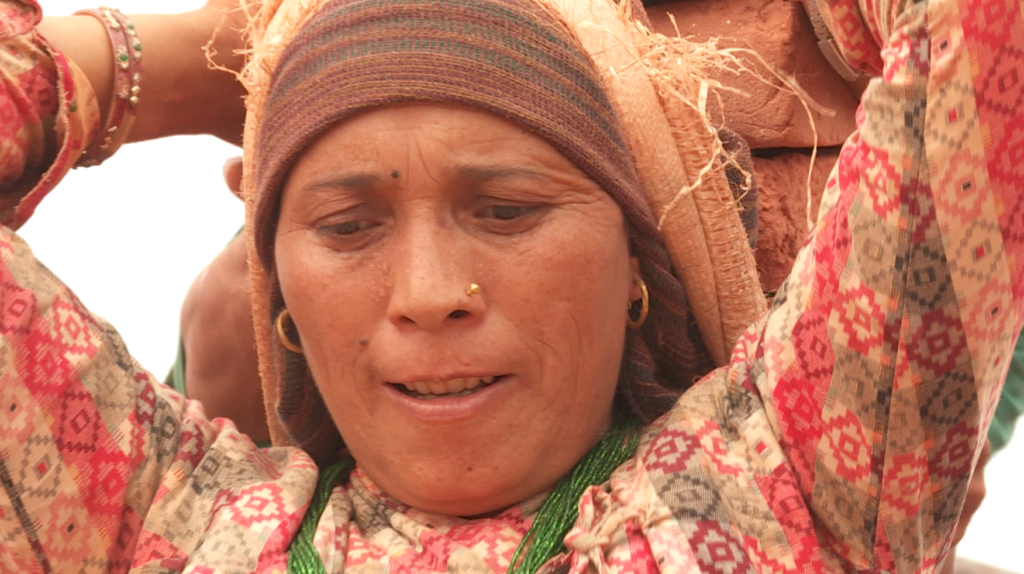
Technically child-labor free
Many kilns can claim that they are free of child labor, as they contract with parents who then bring their children on to help with the work. There are no set working hours. The basic rule is, you work until you’re too tired to continue, and there’s every incentive to continue to the point of exhaustion, because workers are paid by the brick.

“You don’t use your brains to do this work. It’s just physical labor, but we have no choice. We have debts to pay.”
TILOOK MOKTAN
Reconstruction through foreign aid
Nepal’s builders association has agreed to buy bricks from kilns the Better Brick program has certified as free of child labor, where they’re available.







